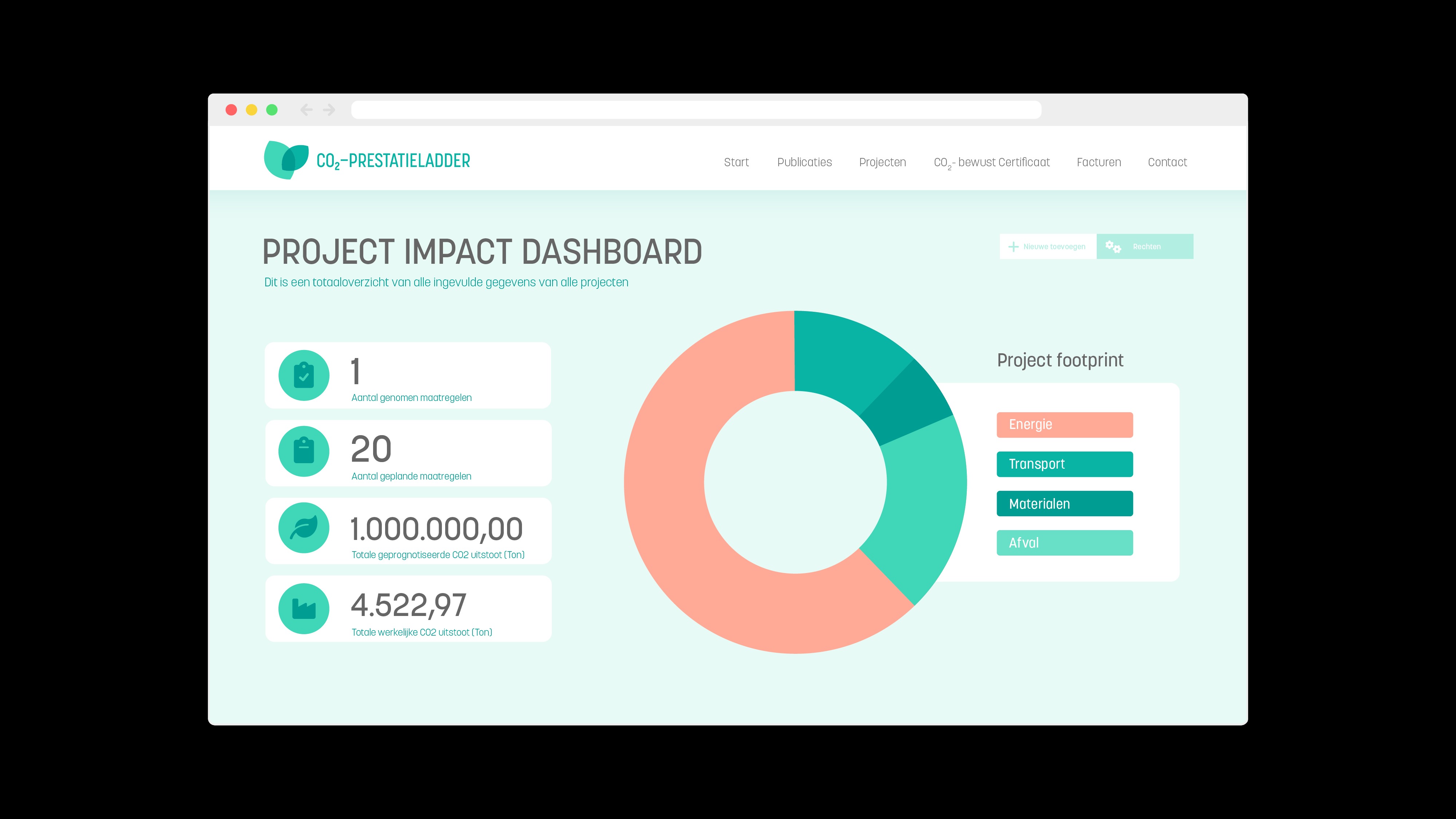News 18 July 2022 News from SKAO
SKAO introduces the CO2 Performance Ladder Project Impact Dashboard: PID
Registrations for companies that have obtained projects with award advantage will now be a lot easier. That is the promise of the Project Impact Dashboard, or 'PID' for short, which SKAO is introducing today. Tijmen de Groot, project manager at SKAO and Bastina van Houwelingen, member of the project group representing contractors and also CCvD member, on behalf of the sector associations Cumela and MKB Infra, explain everything we need to know about this registration tool.
What is the Project Impact Dashboard (PID)?
Tijmen: 'It is a registration tool for projects that have been awarded a contract. In PID, a contractor can easily fill in all the components that are part of the registration of such a project. As a contractor, you are taken through the entire data filling and uploading process step by step. The next step is to fill out the consumption information for waste, materials, energy, and transportation. A CO₂ footprint is calculated in PID using data from co2emissiefactoren.nl. Finally, there is a space where you can enter all the other uploads that are required to meet the standards of the CO₂ Performance Ladder Manual, such as a communication plan. Next, you can fill in all the measures you are doing for the project. The PID does indeed appear to be a user-friendly and complete tool for registering all project data, and Bastina emphasises this: 'PID is really meant as an aid and not as an extra burden.

Image: the Project Impact Dashboard (PID) can be found in the login environment of certificate holders.
Can't the registration simply be done elsewhere?
Tijmen: 'It certainly can and it is allowed; using the PID is not compulsory. What is compulsory, however, is keeping track of all the projects with award advantages that an organisation has. Additionally, is the intention that certificated institutions take random samples of these to check whether everything is in order. Of course, it’s okay if the organisation choose to keep the records on a local disk, or with another tool or format. However, we at SKAO also want to offer help and guidance while also providing a central location to track all registrations for the CO₂-Performanceladder.'
One central location for all publication matters
Bastina clarifies that organizations enter their publications for the Handbook and the Measurement List in the same login environment as the PID. Everything related to publication is now handled in one place. And that, of course, is a great advantage for contractors. Previously, it was possible to enter general project data in this customer portal, such as the name, size and whether there are any joint ventures, but functionalities such as calculating the CO₂ footprint and entering measures for the project were not yet available.
Who can view the project data?
Tijmen: 'That is up to the contractor. First, the dashboard gives you a good overview of your own project(s). In addition, you can easily choose which data you want to share with which party, by ticking or un-ticking the options. Do you want to share the general data, but not the footprint? And with whom? With the CI, the client? The party entering the data has control; the contractor is free to decide how to do this.'
Tool for Dialogue with client
Should the contractor indeed choose to share the data with the principal, this can have advantages, Bastina explains: 'Sharing with the principal provides a powerful tool for a Dialogue about the project. What are the objectives of the project, how can we achieve them, how can we make adjustments? What measures are being taken? How can the project become even more sustainable? There are really big steps to be taken in this respect, and the data in the PID are a great help in such a progress discussion between the client and the contractor.'
Insight into impact and trends
Tijmen also highlights a significant benefit for SKAO, which contributed to the creation of the registration tool. SKAO can use this data to provide more information about what is happening on projects. What are the trends, what measures are being taken? In other words, we can measure what the impact is on projects. Insight and monitoring is an important aspect for the further development of our Manual. And the PID is a perfect match for it.
Benchmark for contractors
And the contractor? As soon as a sufficient number of contractors share their projects with SKAO, a benchmark is created which allows the contractor to see where his project stands in relation to (the averages of) other projects. 'That information can be very motivating and inspiring,' says Bastina.
Tijmen, like Bastina, is proud of the result so far and says that feedback on the tool is certainly welcome. This feedback can be given via the buttons in the PID. We want as many functionalities as possible and a tool that is as user-friendly as possible. That way, we can all benefit from it. SKAO, the principal - but especially the contractor who can use a tool for project registration.
